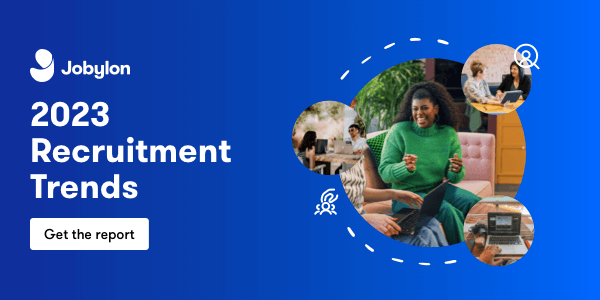Whilst some of us are waiting for the answer to what the future holds. A few of us have already recognised that this is a golden opportunity to take power into our own hands and recreate it ourselves. A great power that nonetheless should be equally distributed and the answer for what’s right for your company moving forward needs to lie in the hands of, not only management but your employees. After a turbulent year where everything we thought we knew about work completely shifted, we’re now entering the next phase with new obstacles, but more importantly, new opportunities to reimagine the fundamentals of the workspace and create something that fits our world, and not the least, our lives today.
What is on the horizon in terms of work moving forward and how do we best embody all the elements of a modern workplace? Hear 4 experts on where we are heading in terms of hybrid work in the future.

1. Embracing change means going *all* the way in
Changing the way we work means dissecting every area of your organization from top to bottom to ensure that every aspect of work is aligned with a hybrid workplace. During this past year, most office-based companies have been forced to embrace a level of flexibility that wasn’t even on the table before. Moving forward, companies are not only expected to have some sort of direction but also have a solid plan set in place to enable a seamless hybrid model. Hear Maria Wiklander, Co-founder of The Remote lab, on the importance of not remaining stagnant in this pivotal moment of change:
“Moving forward, I believe that we will witness a lot of failed attempts to sustain a hybrid workplace where companies haven’t fully committed to it. What companies need to understand is that equality in a work environment for organisations with a hybrid model can only emerge if you adopt a remote-first approach in the organisation. And, I believe that we underestimate what it truly means. It needs to include all parts of the organisation - from vision to mission down to policies, benefits, meetings, terms of employment, etc. Consequently, you certainly need to practice what you preach, which means that even management has to work remotely.”
2. New patterns are changing the way we live, and therefore the way we work
In fact, workers are already settling into their new normal as relocation patterns are drastically changing. In The Remote Lab latest report “Remote Work and new relocation patterns in a post-covid world”, they identified these 5 drivers of change that are shaping the world we work in:
- New Relocation Patterns
- Multi-locational workers
- Emergent communities
- New investment patterns
- Reinventing places
Read more in-depth about these 5 identified patterns HERE
As many workers around the world in office-based roles have been able to relocate or even work from multiple locations, countries are now making it easier for remote workers to do so. Estonia became the first country in the world to create a 1-year digital nomad visa which enabled remote workers to relocate more seamlessly while contributing to their local economy.
These indicators speak for the reality many employees see for themselves. A reality with new possibilities to create a life on their terms, rather than adjusting their preferred way of living to fit a job description. With major companies such as Spotify, Shopify, and Dropbox announcing that they’re giving employees the possibility to work from anywhere permanently, it will be even more challenging for companies who decide to keep pre-covid policies to argue why it’s worth returning to the office. Hear Maria again on reimagining the office:
“Companies who force their employees to be in the office full-time will have a harder time recruiting talents, and they will most probably have a harder time retaining their talents. In the long run, this could mean that their relevance, productivity, and innovation will subside. There have to be extremely good reasons for why you’re forcing employees to work from the same place between 8-5 each day. Cubicles that we lived with have no relevance now after corona, and specific timeframes and geographical location isn’t a measurement on levels of productivity and innovation, something that the pandemic already has proven.”

3. How to spark creativity in a remote setting
According to Future Forums, employees want the flexibility to choose between the office and remote work moving forward especially underrepresented groups. This past year has not only been the biggest work-from-home experiment in history, but it has also made many of us rethink the purpose of the office. From a place where business gets done to a meeting spot for collaboration and socialising. But, even when it comes to keeping a spark of creativity and innovation remotely. With a little help with technology, it’s very much possible to create a creative and innovative work environment.
We had a little chat with Duncan Wardle, the former Head of Innovation & Creativity at Disney on how to keep the creativity high in a remote setting:
“Both Virtual and Augmented Reality will shortly open up so many new opportunities to work together in virtual environments that will allow us to collaborate with people from around the world in real-time. Just think about the amazing ideas that diversity of thought will bring about!”
Virtual reality is one of many digital solutions that transform our experience of working remotely into a more human-centric one and brings us closer to the perception of being in the same room as one another. Working apart from each other means that we have to instead heighten the shared experience to remain a sense of belonging. Because let’s face it - even if a hybrid office is the reality of many right now, we’re still longing for that human connection. Something that will become a vital part of a hybrid environment, especially as we’re moving towards a more asynchronous workspace where workers don’t have to be in the same timezone to efficiently collaborate. Emelie Fågelstedt, Co-founder of Svenska Nomader and leading voice within the future of work, on autonomous work:
“We'll see more asynchronous work, where people can focus on their tasks without being dependent on each other’s schedules. Having clear routines for digital communication will be crucial - so that both remote staff and those in the office are always kept up to date. We’ll document and share the work we do in new ways, to make everything available for each other at all times. That way each individual can decide by themselves if they want to work from the office, from home or the road, and if they want to have set working hours or not. Remote will be a natural part of most workplaces, and we’ll be able to collaborate with other regions and countries in new ways. But the office will still have an important role to play for networking, brainstorming, workshopping, and building culture; at least occasionally.”

But before we start establishing new practices and implementing digital tools to build new infrastructures, we have to prepare to adapt our leadership. Johannes Sundlo, Senior People Partner at The Talent Company, sums it up perfectly:
“Growing up, my teachers always told me, "You have two ears and one mouth”. That's because you should listen more than you speak. I'm not sure how well I followed the advice back then, but the listening part is the biggest challenge all leaders face, remote or not. Are you listening to your employees? Are your _really_? It doesn't matter if you meet someone in person or on a screen - listen actively, make sure you've understood the other person, and good things will come from it.”
A dynamic leader understands that a new way of working means that we have to cultivate new mindsets and ways of thinking, but more notably, a developed leadership style. Here are 3 principles that will make life easier for leaders when entering a new world of work:
1. Emotional intelligence is key in a hybrid office
Even if the workforce is distributed, emotional intelligence is still what leads the way when connecting remotely. An emotionally intelligent leader can extend a sense of belonging and safety into their teams as well as adding humanness through their workday, whether they’re in an office or working remotely from across the world. Use technology to amplify this!
2. Lean on results, not the amount of time spent working
Having your employees stare at a screen just because it isn't productive. If we want to be in tune with a new world of work - we, first of all need to embrace the fact that everyone is different, and proceed with that. An individualised workspace based on trust means that we don’t have to control our team in order to run our team effectively. Instead, focus on building mutual trust and a transparent environment where everyone has the support they need to deliver their best.
3. Master asynchronous communication
Having one employee in Brazil and another in Australia - welcome to the new reality (or not so new for the veterans) of working across borders. Mastering asynchronous communication is essential for a hybrid office to run smoothly and enables more productivity, focus, and autonomy in your employees’ workdays. When we turn synchronous communication (a meeting or a phone call for example) into asynchronous (a message or an email), employees have an opportunity to set up their workday in a way that better suits them. That doesn’t mean we should swap all human-centric types of communication into emails, but it’s a great solution to make sure we’re in communication no matter where we are in the world.
Summary
It’s undoubtedly a time of new challenges, but more so, it’s a time where we can elevate and explore new ways of how to run and adapt our workplace in a fast-changing world. As well as take a closer look at traditional functions and evaluate if and how they serve a purpose for our employees in today’s world. Whatever future your company is envisioning for yourself - it is time to change it into something that doesn’t only fit a few, but all of us.
Related content you also might like:





